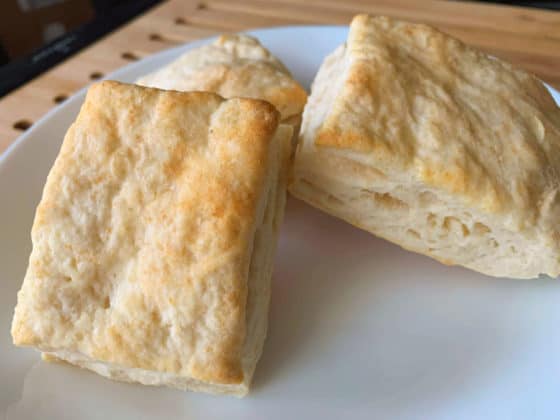
I knew even as I was rolling out that soft, pliable dough that the White Lily biscuits were definitely going to be different from the others. Holy cow, those southern cooks know what they’re talking about! The White Lily self-rising flour far outperformed the store brand self-rising flour and the self-rising substitute. As you can see from the scale, this was a rather messy operation! I baked a total of 33 biscuits across the three batches (it actually took the White Lily batch 5 minutes less time to bake than the other two)… The buttermilk seemed to absorb immediately. The self-rising substitute dough was extremely dry and very difficult to form into a dough. My biscuit cutter easily slipped through the White Lily dough, barely needing any flour to keep it from sticking. The store-brand felt like typical biscuit dough I was used to, but the White Lily was notably softer and more pliable. Nonetheless, I yielded a different quantity of biscuits each time (9 for the store brand, 11 for the self-rising substitute and 13 for White Lily).Įach of the doughs felt differently when I rolled them out too.

I did my best to roll out each batch of dough to the same 1/2″ thickness. One cup of self-rising flour is equivalent to 140 grams, so I used 280 grams (2 cups) in each batch. Since there can be a lot of variation when it comes to measuring (especially since White Lily is a lighter flour than the others), I decided to weigh the flour to ensure I used exactly the same amount in each batch. Still, once you see the results I think you’ll be pretty amazed! While I did my best to make this test as fair as possible (I’m no statistician but I do like to dig into data), it’s hardly scientific.

once with “self-rising flour substitute” (all-purpose flour + baking powder + salt, as specified on the Gold Medal All-Purpose flour package)Įach bag of flour was purchased within the past week.once with White Lily self-rising flour, and.



 0 kommentar(er)
0 kommentar(er)
